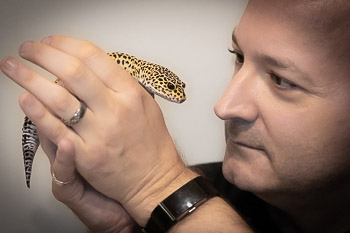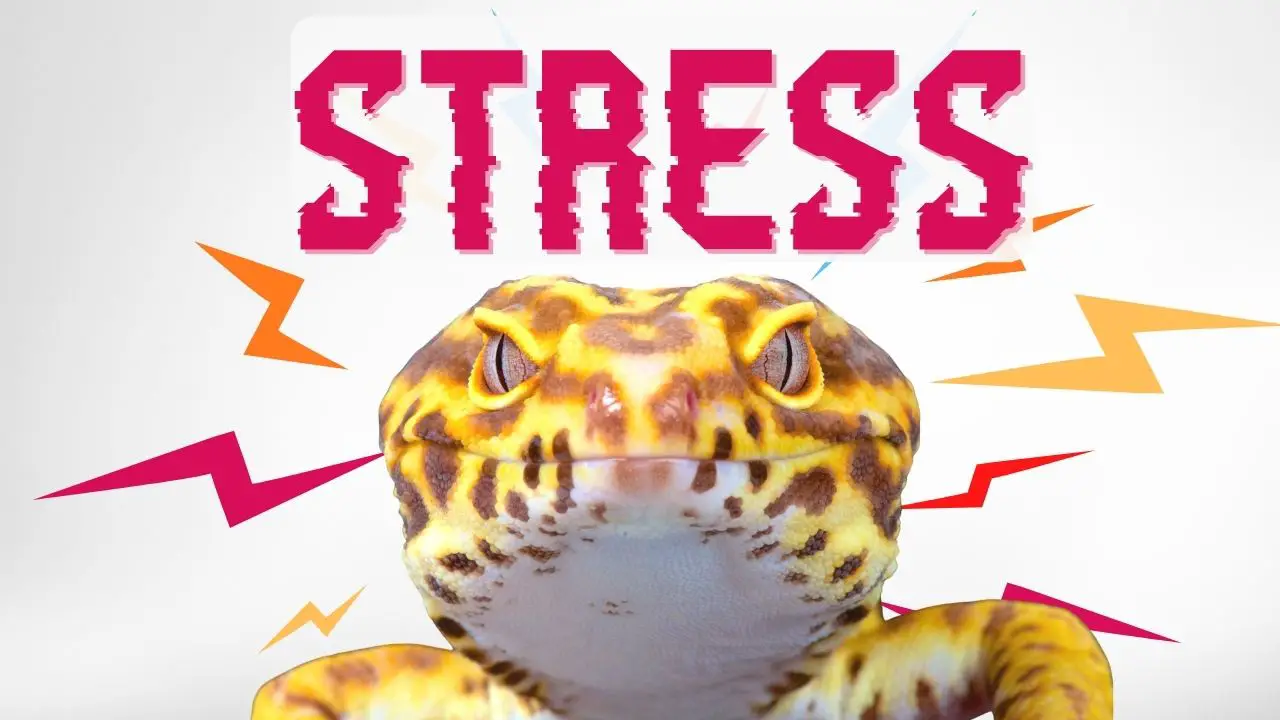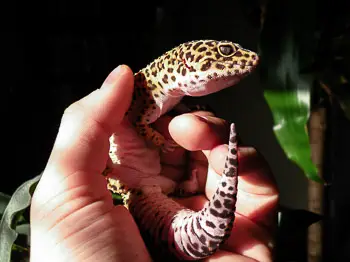Once you start keeping reptiles as pets, it’s natural to become curious about other reptiles. If you’ve set up a habitat, you may wonder what leopard gecko tank mates would work best.
With a multitude of options (crested geckos, Tokay geckos, chameleons, bearded dragons, iguanas, anoles, etc.) it’s easy to want to collect them all; especially if you’ve got a great tank tricked out with the greatest gear.
(Related Post – check out our habitat guide here)
Wouldn’t it be great to have them all live together as one happy family?
Cue the sad trombones.
Before you get too excited about building a reptile utopia, it’s best not to mix species when setting up enclosures. Let’s explore a few considerations when contemplating leopard gecko tank mates.
Different Species, Different Needs
Different species often require different care and conditions. Leopard geckos thrive in desert conditions with low humidity. Since they are active at night, leopard geckos do not need UV light. Other potential tanks mates, say for instance a crested gecko or reptiles from tropical regions, may prefer higher humidity. Bearded dragons have a preference for a desert climate like the leopard gecko, but bask in the daytime and require or UV lighting.
You may find other species have different needs for humidity, lighting, or both.
Can leopard geckos be kept with other species of lizard? Reptile keepers love crested geckos, bearded dragons, and anoles. Click the links to find out if leopard geckos love them too.
Competition
Housing different species together may cause competition for food. Even lizards of the same species in a shared enclosure may compete for food, and some tank mates may be bullied or denied access to the food.
Having several species in the same tank may set the stage for them to become aggressive towards each other when trying to establish territory or dominance.
Many lizard species will drop their tail as a defense mechanism, which becomes a risk should they fight.
Predator vs Prey
Not only may there be competition for food. One species or reptile may be the food for another. You need to be cognizant of who eats who before placing different pets in a tank together.
If there is a significant difference in size between your selected tank mates, the larger one may be inclined to look upon smaller tank mates as lunch.
Witnessing the food chain in action may make for great entertainment when viewing a documentary on Nat Geo or Animal Planet, but not so much in your tank with your pets.
The Food Chain In Action
If you really want other living creatures in the tanks with your leopard gecko, we’d suggest something along the lines of crickets, mealworms, or dubia roaches. Yes, the feeder insect your leopard gecko will eat. Even these should be placed in the enclosure at feeding time or kept in a feeding dish designed so they do not escape.
What about other leopard geckos?
Leopard geckos are solitary creatures, and are best housed alone. Males are territorial and will often fight among one another once they reach full size. Males and females should cohabitate for breeding purposes. You can read further in our post about housing multiple leopard geckos together.
Wrap Up: Leopard Gecko Tank Mates
It may be tempting to house other pets with your leopard gecko, though they are generally solitary creatures once reaching about a year old. Even keeping leopard geckos together in the same tank should be done strategically with enough space for each gecko to have its own territory and food, or for breeding purposes.





